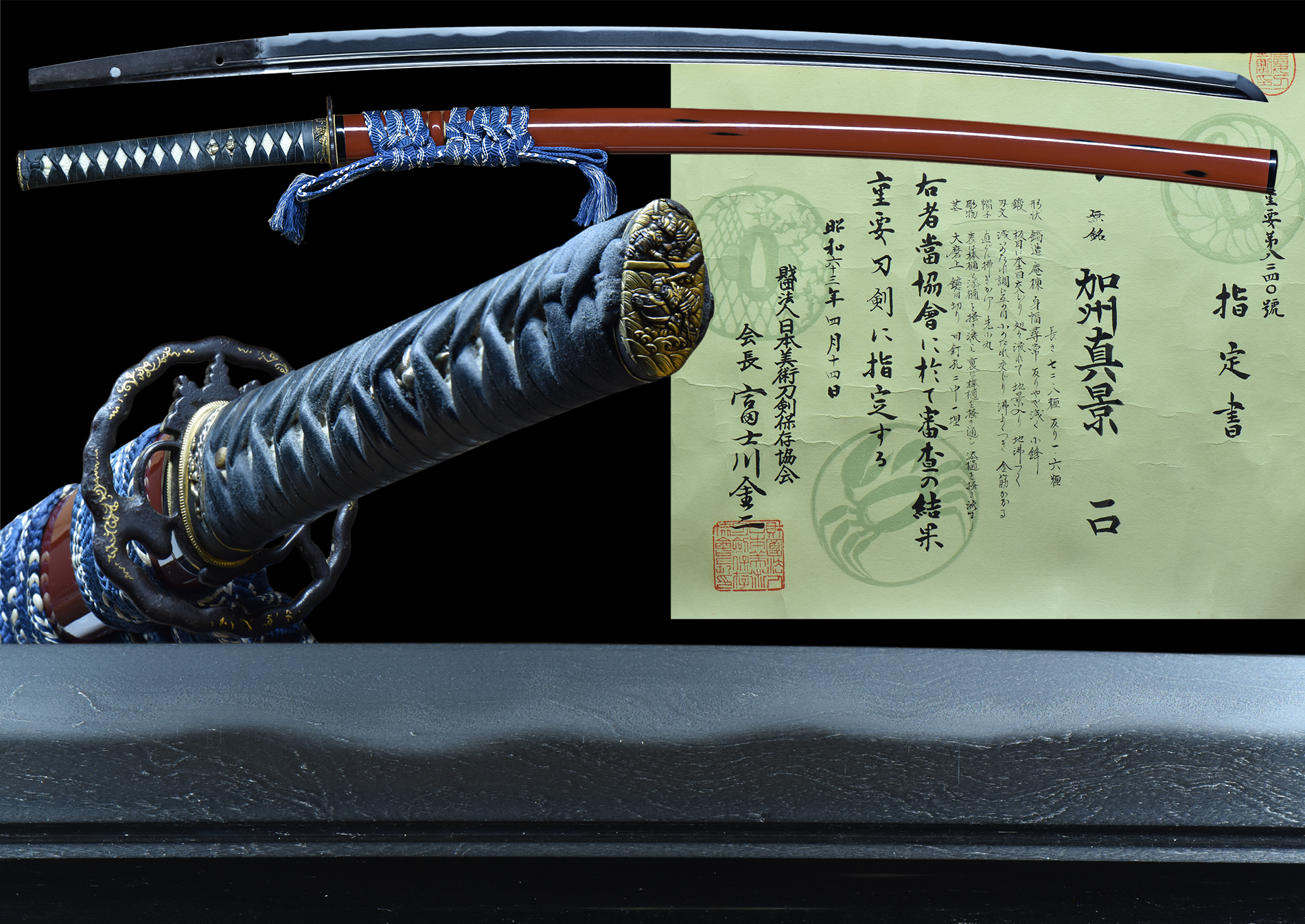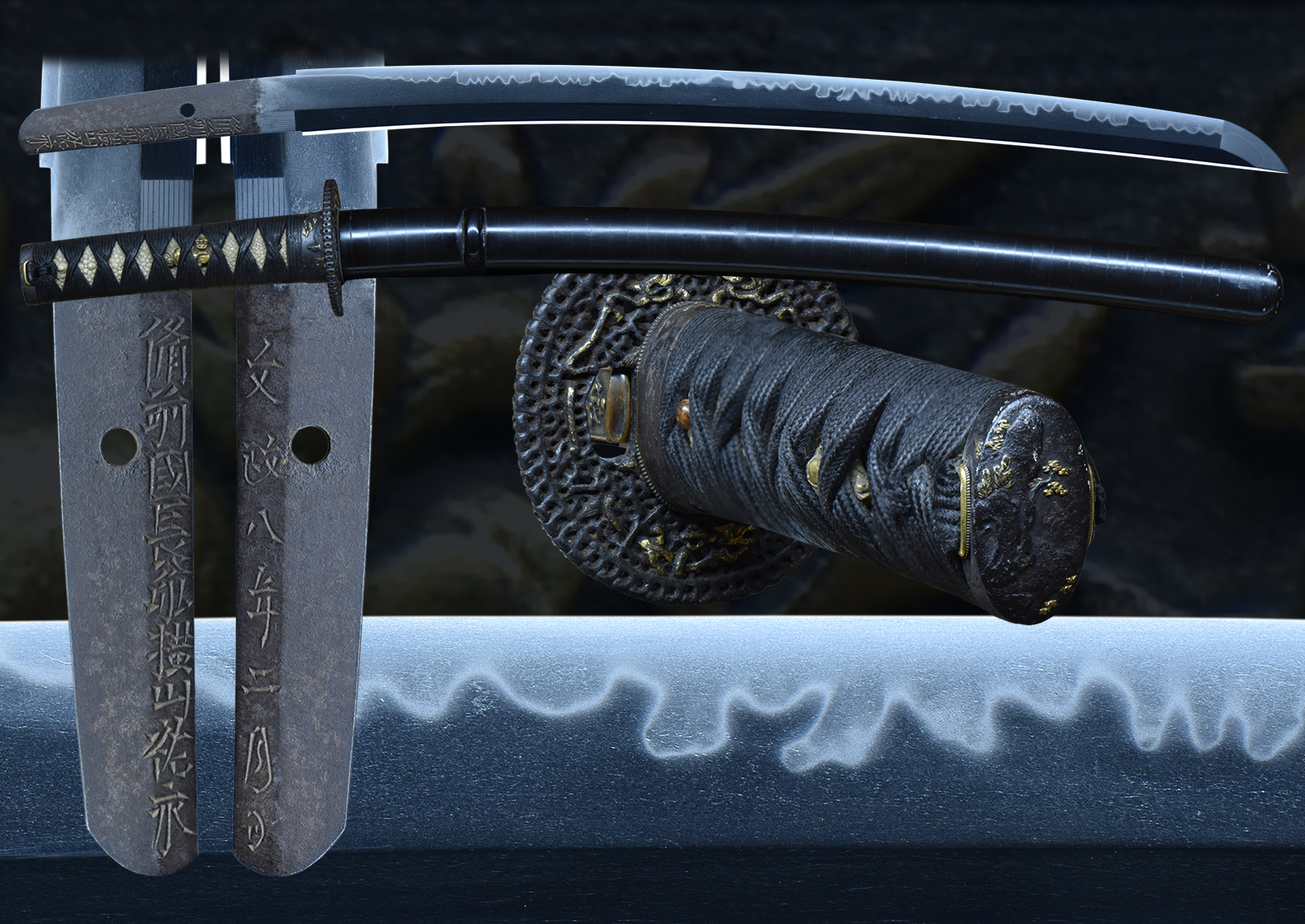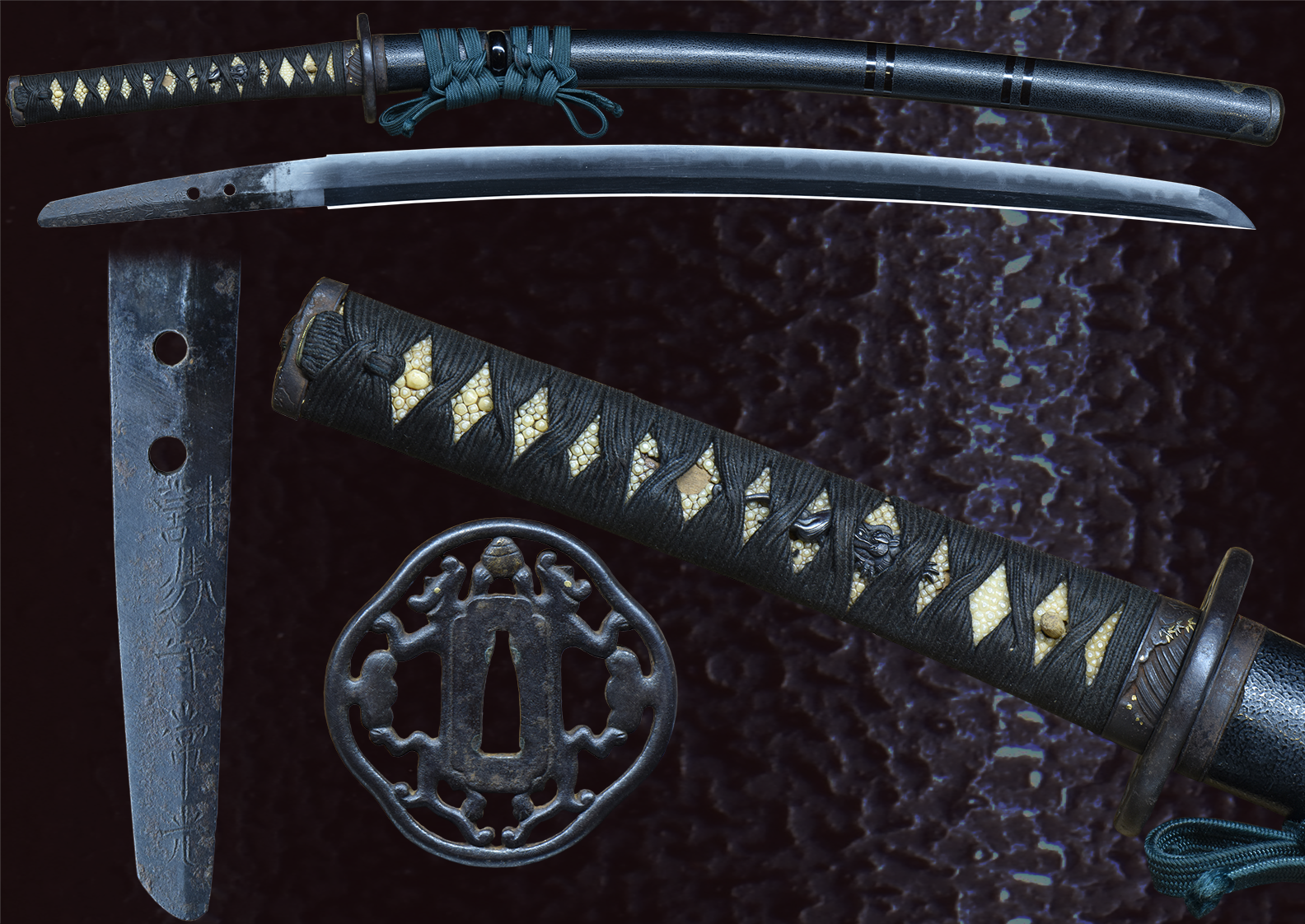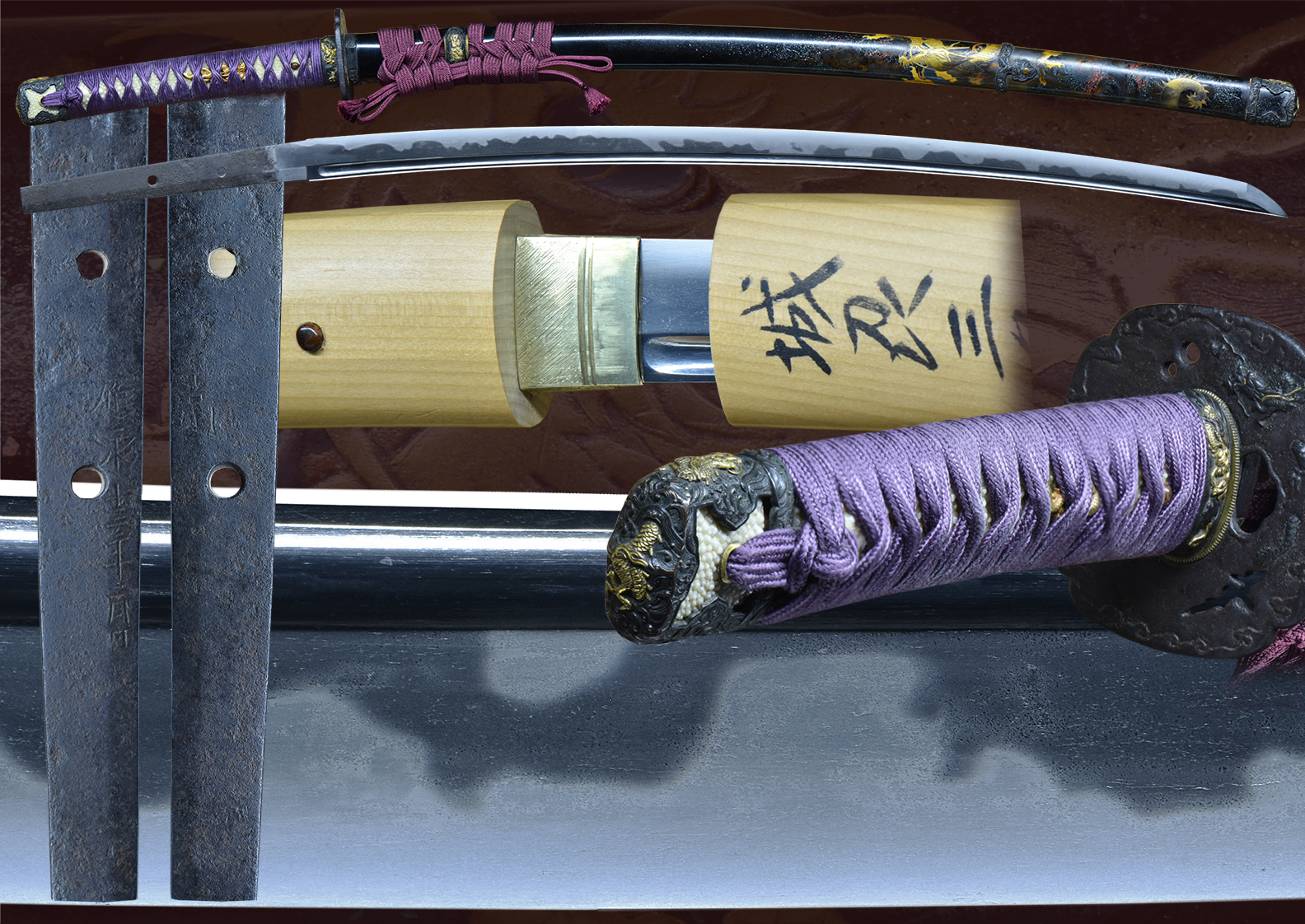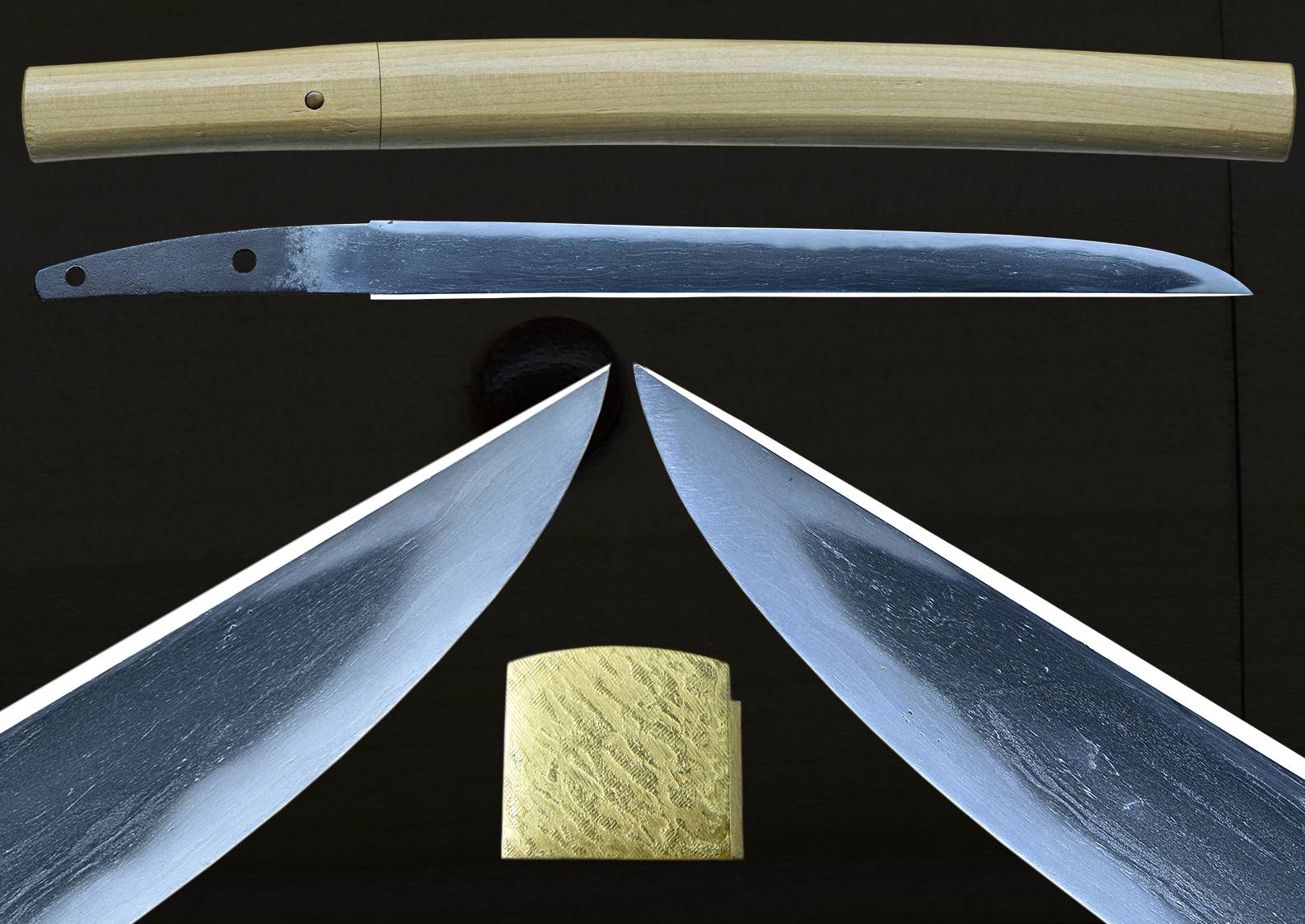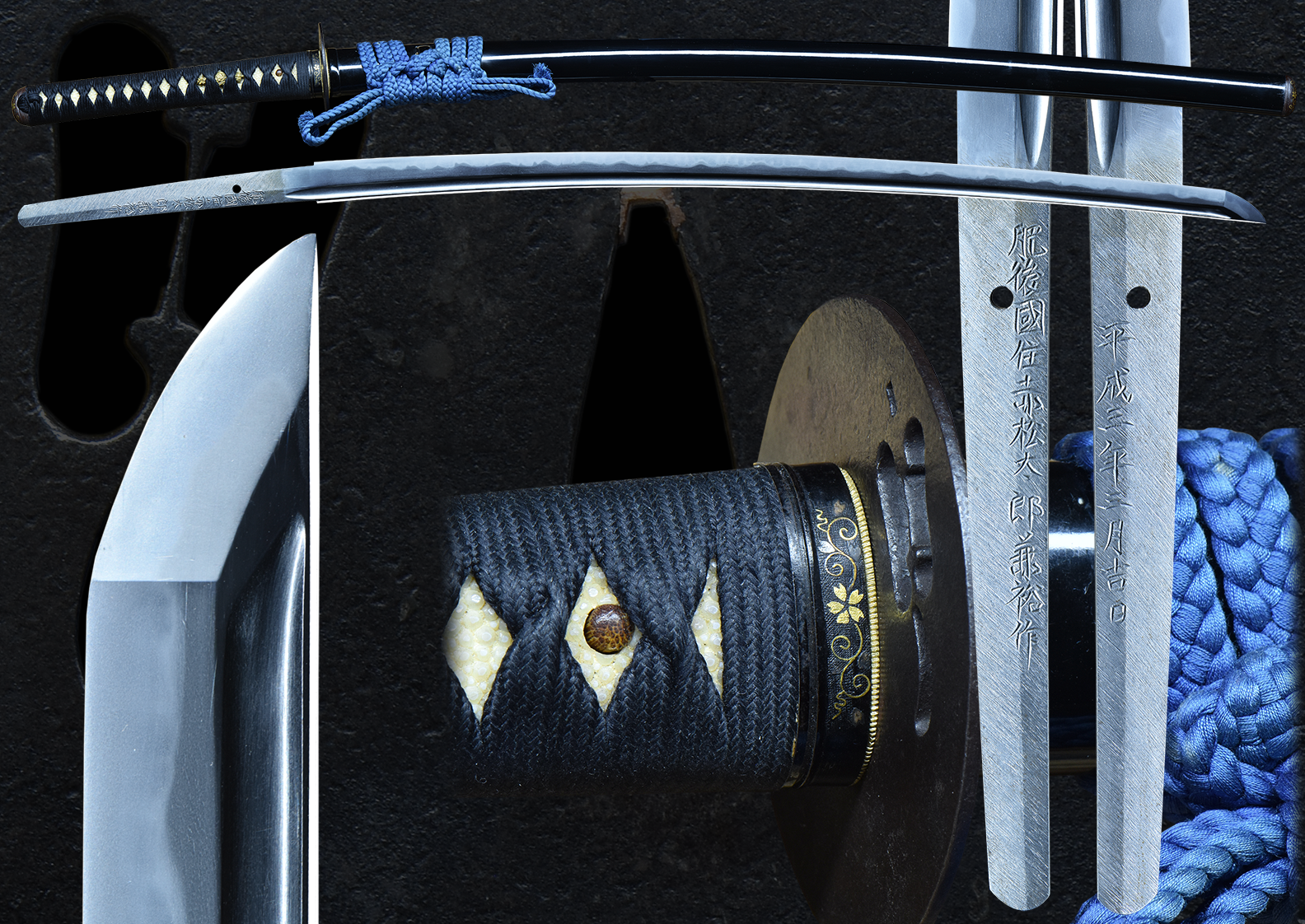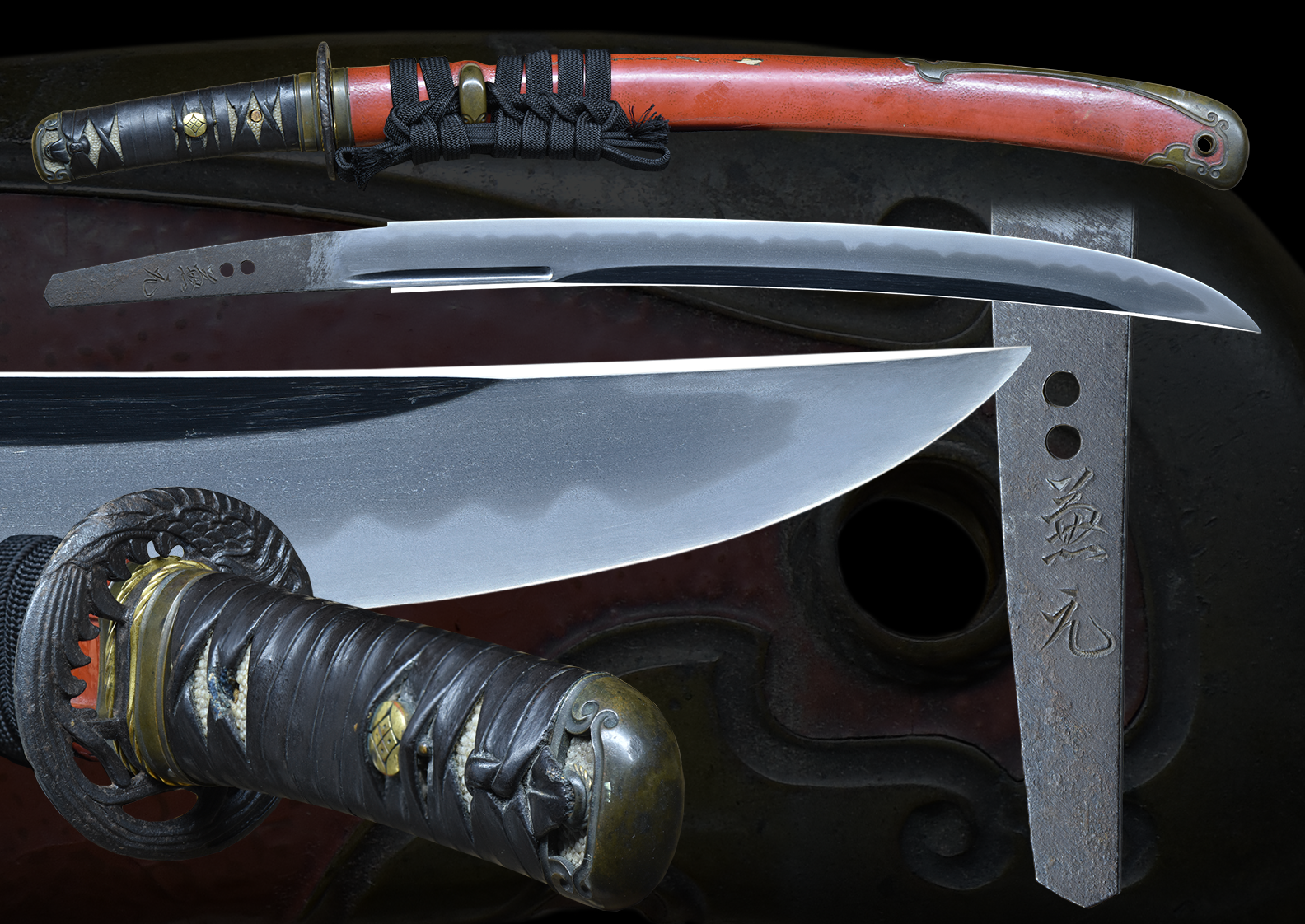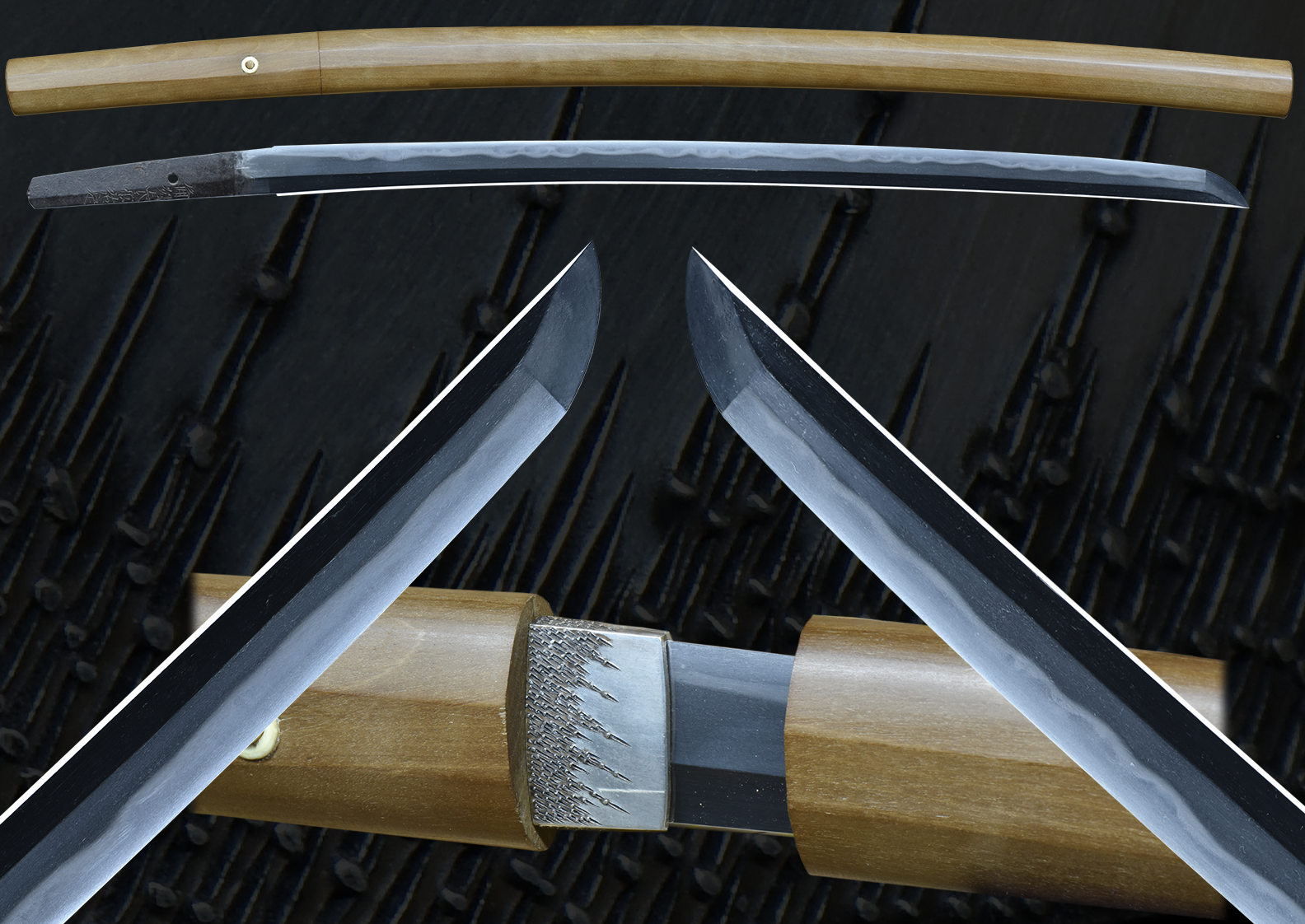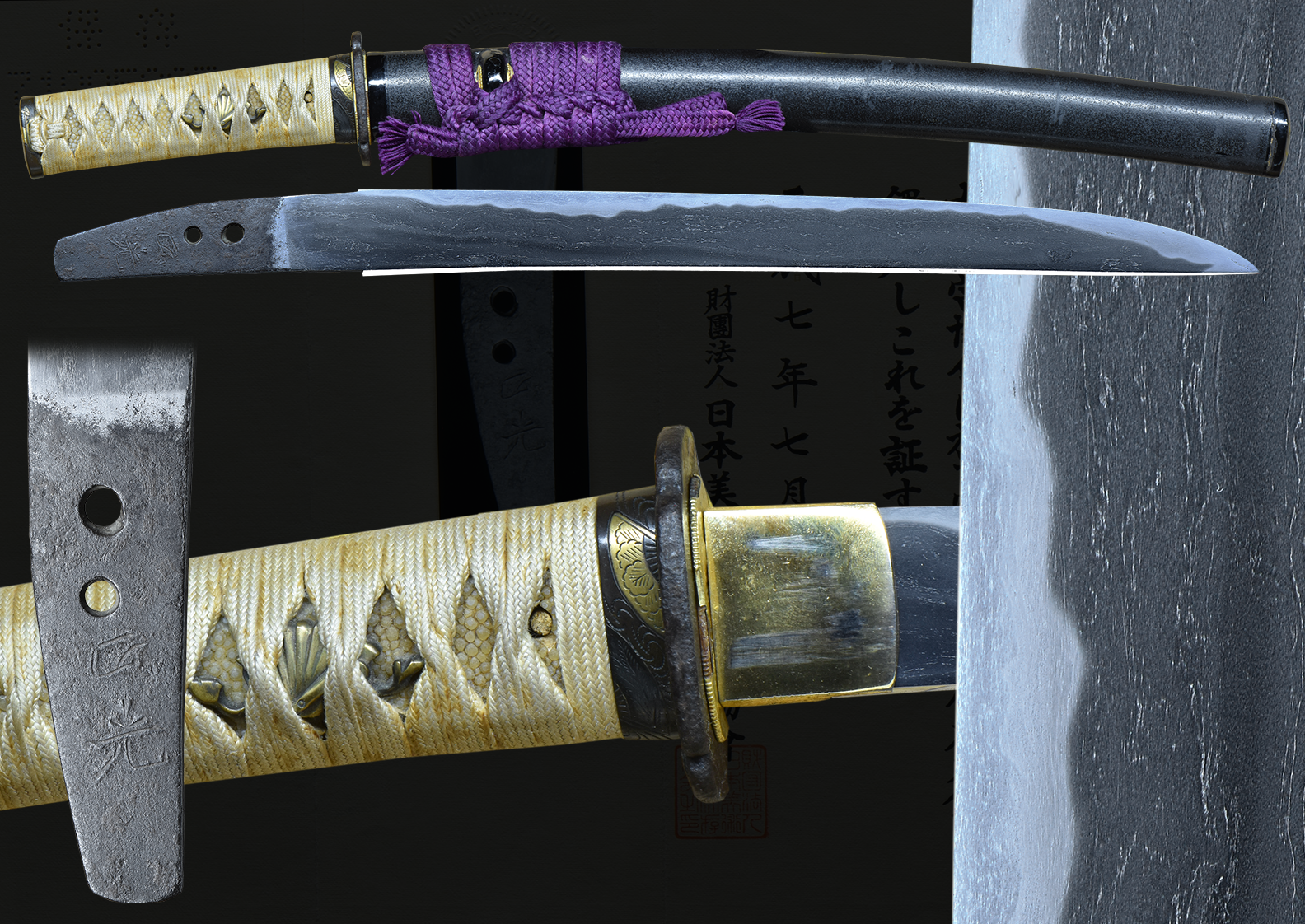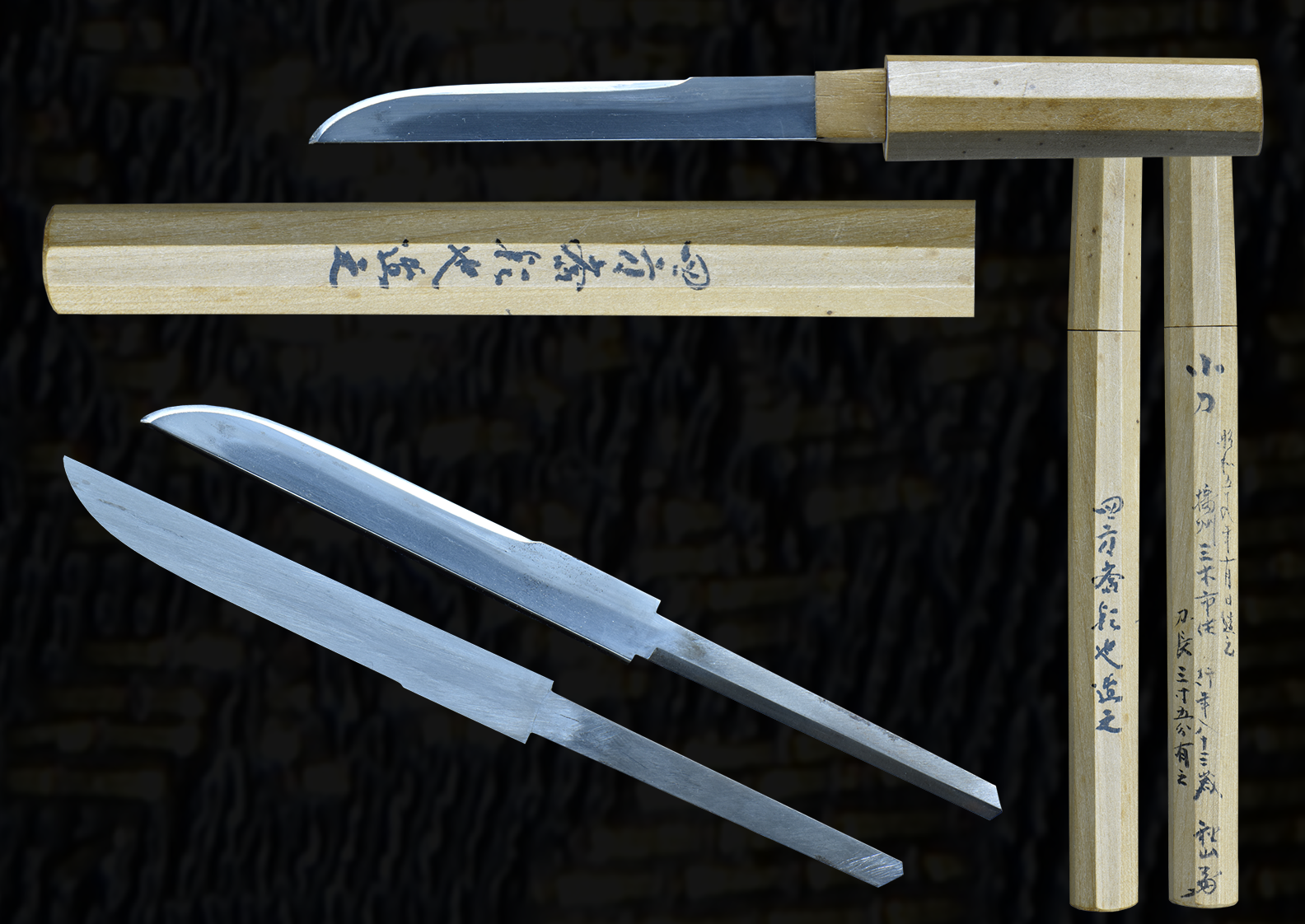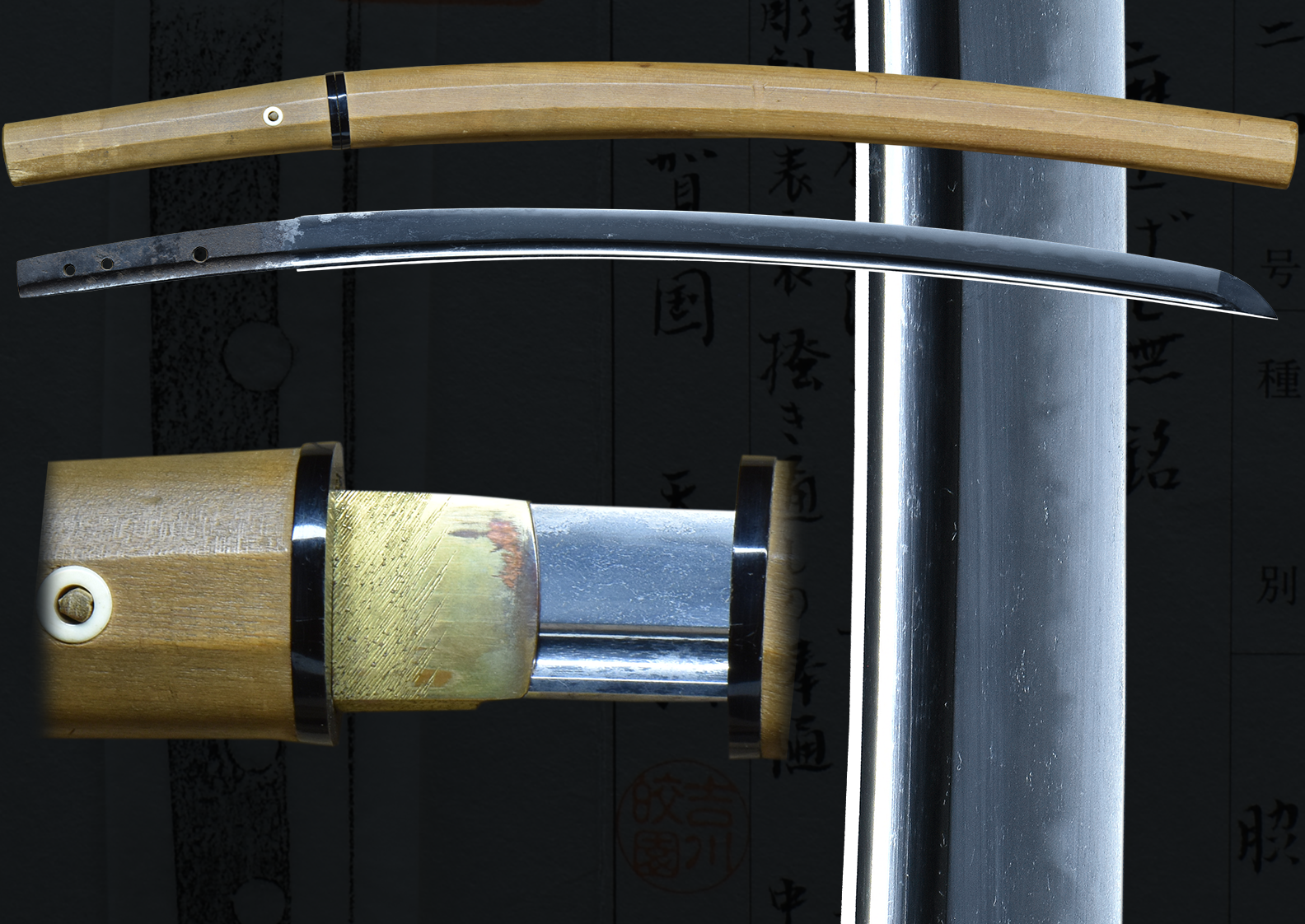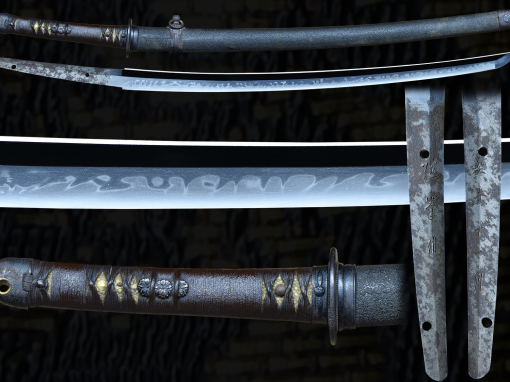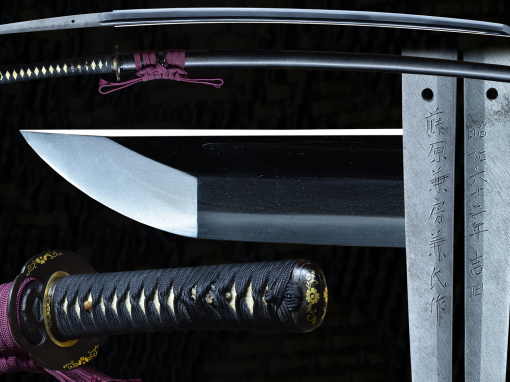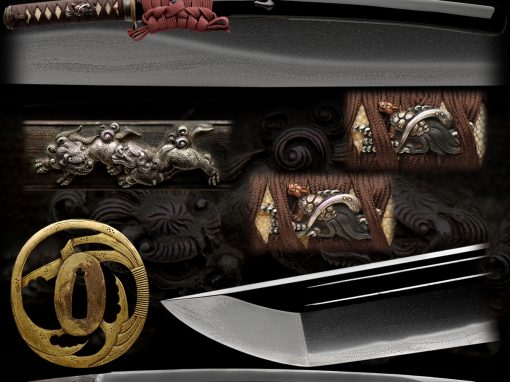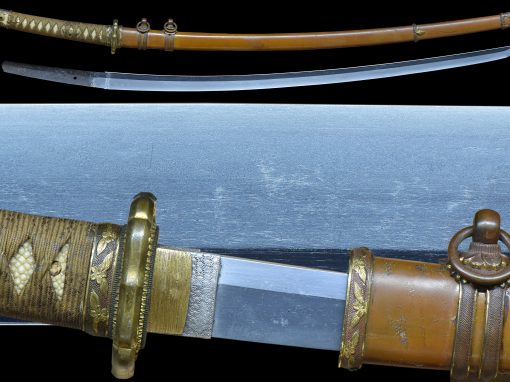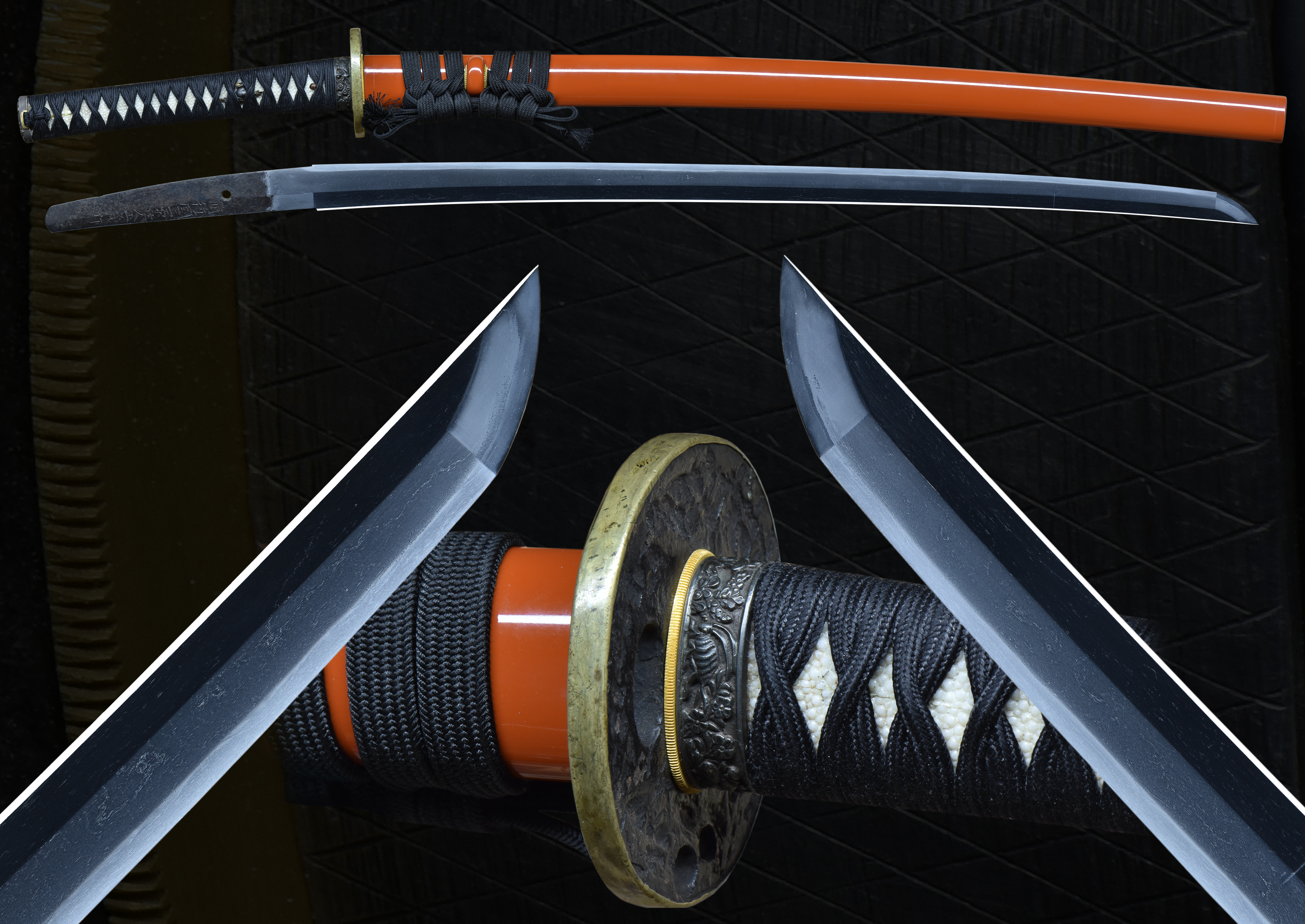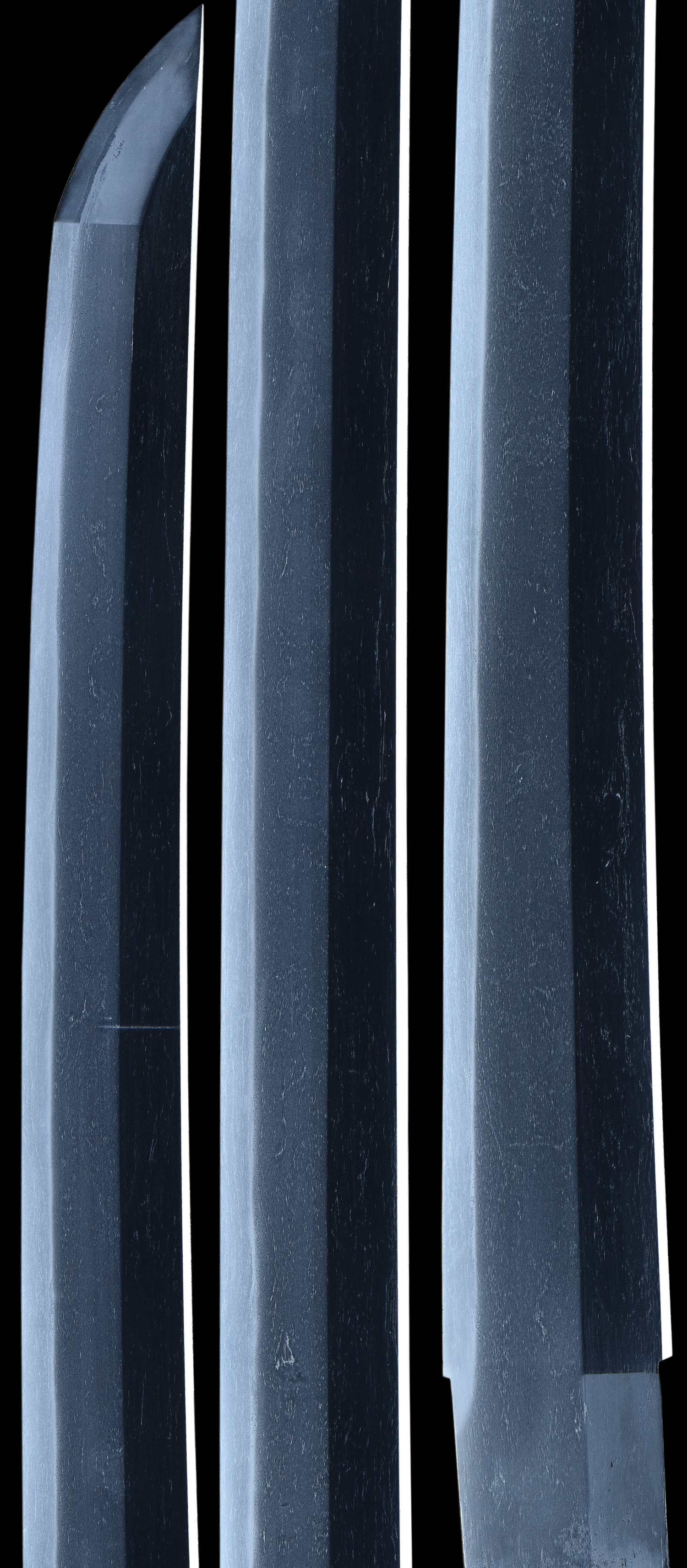This blade was made by Bingo Masayoshi and has been fully restored. The Mihara roots are from the Yamato tradition which is very apparent in this blade. The hada is covered in Ji-nie and consists of an itam nagare with mokume burls as well as masame. The boshi is ko-maru with slight turnback. There is ko-nie present as well as nijuba. The hamon is peppered with ji-nie and fine workings can be seen. There is sunagahi and kinsuji throughout. The blade is signed “ BINGO (NO) KUNI MIHARA JUNIN MASAYOSHI SAKU “ We believe this to be the Bingo 1573 smith as there were a few generations. This time period which would put him in the Sue-Mihara category. This blade is ubu with one mekugi ana.
The koshirae is attractive. The saya is finished in a red lacquer satsuma style as was the original Saya color. The fuchi/kashira are floral and bug motif in silver. The Tsuka[- ito is black with matching sageo. The tsuba is iron with brass rim. The menuki are of a frog or toad motif. The habaki is silver foiled in a diamond pattern. There are gold washed seppa. A beautiful example of a signed koto blade in koshirai.
The sword has some miner imperfections/wari but overall its well made. Interesting to note is that the sword has two cuts that are visible on the sword. It appears that the sword was in a battle and was used to block another sword or was slashed at in some way. This is a very interesting thing to find on a sword and we feels adds to the item very much. Since the 1500’s to present day this sword must have seen battle as is evident on the blade itself.
Bingo province.
The Mihara school was known from the Late Kamakura period to the late Muromachi period.
The First period was Kamakura to Nanbokucho period. This is considered Komihara.
The early to middle Muromachi perid is called just the Mihara school.
The late middle to late Muromachi period is called Sue Mihara school.
- Mei: Bi
- Date: Edo (1500’s-1600’s)
- Nagasa: 23-1/2 inches (2/8″ just under katana length)
- Sori: 9.0 mm
- Width at the ha-machi: 29.1 mm
- Width at the yokote: 18.9 mm
- Thickness at the mune-machi: 7.0 mm
- Construction: Shinogi zukuri
- Mune: Iori
- Nakago: Ubu
- Kitae: Itame/mokume
- Hamon: Suguha
- Boshi: Maru
- Condition: Good polish
(shipping and insurance included)
Email us if your interested in this item and remember to include the order number for this item: fss-885.
Click to Enlarge Image
Click to Enlarge Image
For Sale
